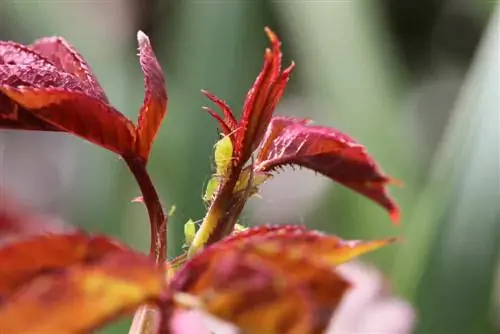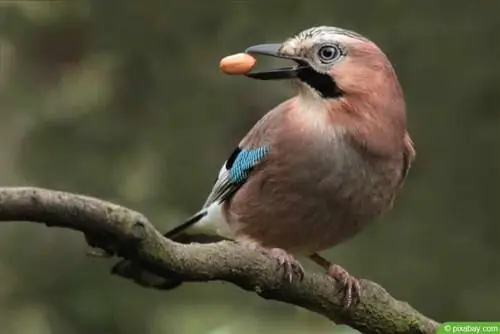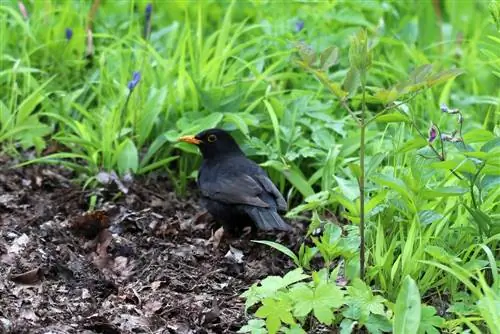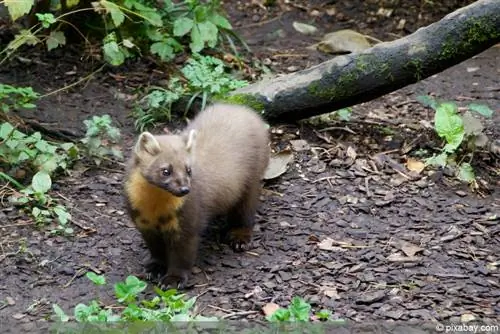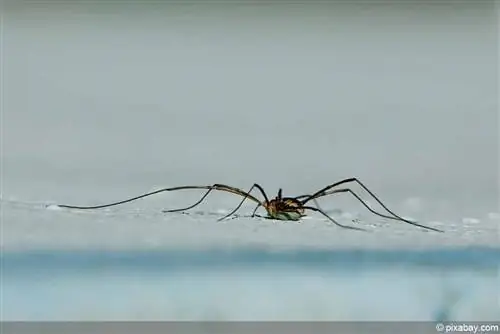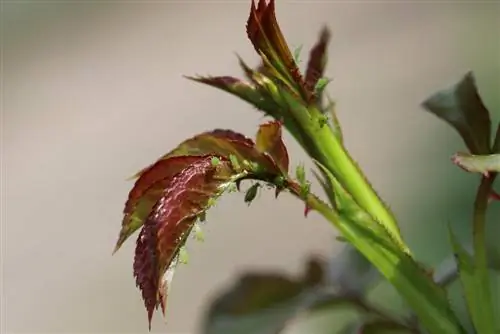- Author admin [email protected].
- Public 2023-12-17 03:39.
- Last modified 2025-06-01 06:48.
The aphid sucks the sap from the plants, weakening them. The damaged areas on the plant epidermis also offer pathogens the opportunity to penetrate, which is why you should get rid of the lice quickly.
Common native species
There are around 850 species of aphids that are native to Europe alone. Some of them have specialized on certain plants, like the bean aphid on beans and other legumes. The species that are particularly problematic for hobby gardeners are those in the aphid family (Aphidoidea). They mainly attack fruit and vegetables and occasionally flowers. Ornamental shrubs in the garden. The coloring of the aphid species often varies depending on their food sources or living conditions and, in addition to green ones, there are also yellow, black and red species.
Pea aphid (Acyrthosiphon pisum)
- Size: 2 - 4 mm
- Color: green to yellowish (rarely reddish)
- flyable
- Damage: Host plants are deprived of important building materials; Transmitters of viruses with leaf roll and mosaic symptoms
The greenish to yellow pea louse can be found on a variety of legumes. In addition to peas, it can often be found on broad beans or lentils. It also attacks exotic plants such as fenugreek.
Black bean louse (Aphis fabae)
- Size: 1.7 - 2.7 mm
- Color: matt black or dark green
- flightless
- Damage: Transmitters of viruses and fungi (black fungi); Leaf rolling symptoms and curling of the shoot tips
The bean louse is mainly found on beans, but also attacks plants such as potatoes or beets. The glandular balsam, which is spreading widely as a neophyte in Central Europe, is particularly popular. However, the black bean louse does not overwinter on its food plants, but in shrubs such as the common viburnum (Viburnum opulus) or the priest's hat (Euonymus europaeus).
Green peach aphid (Myzus persicae)
- up to 2 mm long
- Color: black-brown
- capable of flying (wings greenish)
- Damage: Leaf rolling symptoms, yellowing symptoms
The green peach aphid is only found on peach trees.
Large rose aphid (Macrosiphum rosae)
- Size: 3 - 4 mm
- Color: black (head), green - pink (body), rare red specimens
- predominantly flightless
- Damage: Warping, discoloration; Carrier of sooty mold fungi

The large rose aphid specializes in roses. It is often difficult to recognize because there are not only green specimens, but also red ones. Only when generations with wings are produced does a switch to other host plants occur. Then they usually colonize teasel or valerian plants. In late summer, the rose aphids migrate back to their preferred food source, the roses.
Note:
White lice are often equated with aphids. However, white lice do not belong to the aphid family, but to the whitefly family.
Propagation
One reason aphids become a problem is because they can multiply quickly. If there is no male present, aphids can reproduce without being fertilized by another specimen. If there is not enough space on a plant, they often produce offspring that absolutely need fertilization. These offspring usually colonize new host plants and their offspring can reproduce again without males. Females can produce numerous offspring within a few weeks, making up to forty generations possible.
Winged offspring are rarer among aphids. A trigger for winged offspring is when the habitat becomes too scarce and they have to colonize new areas or when enemies threaten them. When a group of aphids is attacked by an enemy such as a ladybird, they emit a special scent that causes the next generation to grow wings.
Combat
Aphids produce sweet honeydew, which is sought after by ants. Therefore, lice populations are often maintained by these insects, which promote an increasing population. Therefore, it often makes more sense to remove the ant nests first and then fight the aphids in the next step. The easiest way is to relocate the ant nests. To do this, the ant nest is first located and then a large pot is placed over the area. After several days, the insects have moved their nest into the pot and you can dig up the ant nest with a spade and move it to a place where they will not cause any damage.
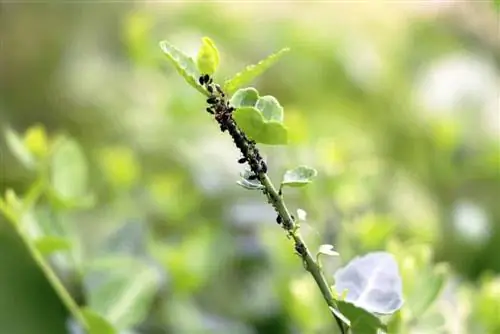
Once the ants have disappeared, you can fight the aphids. There are various home remedies available that do not harm the plants and are also harmless to other insects, as they are often repellents.
Fernwort tea
- Crush 100 g bracken or worm fern
- Boil 500 ml of water
- Pour hot water over herb
- Let it steep for 24 hours
- simmer again for 30 minutes the next day
- Dilute tea with 500 ml of cold water
- Treat affected plants repeatedly at intervals of 2 days
Soap suds
- 50 g curd soap or soft soap
- 1 l hot (not boiling) water
- Grate soap and dissolve in water
- Spray plants with it every 2 - 3 days
Note:
The advantage of soft soap lye is that it not only drives away aphids, but also frees stomata that are clogged with honeydew and are important for plant respiration.
Preventing aphids
One possibility is to actively remove the aphids, but it is much better if you prevent the aphids, for example by establishing natural enemies or underplanting plants that they don't like.
Natural enemies
- Ladybirds (larvae and beetles)
- lacewings (larvae and flies)
- Parasitic wasp larvae
- Predator bugs
- ground beetles
Planting herbs
Mediterranean herbs can also prevent aphids and their protectors, the ants. The intense smell of the herbs drives away the insects. Popular repellents as underplanting are:
- Lavender
- Thyme
- Savory
- Peppermint
Strengthening plants

Plant strengthening agents also help to make life difficult for the aphids. This primarily includes strengthening the plant epidermis. On the one hand, you can achieve this by using nitrogen fertilization sparingly. You can also strengthen the plants with manure. Nettle manure and horsetail manure are particularly helpful against aphids.
You can prepare a manure as follows:
- fresh herb in the amount of 2/3 of the selected container
- Roughly chop the herb
- pour rainwater or tap water over it until the container is full
The manure has to stand for several weeks until most of the herb has decomposed. Dilute the manure in a ratio of 1:10 and use it to water the plants. If the plants already have aphids, you can also apply the manure as a spray to the affected areas. Manure is more of a long-term remedy. If you need a remedy that is available at short notice, you can also prepare nettles as a broth. To do this, pour boiling water over 200 g of fresh and chopped herb and leave it to stand for 72 hours. Then spray the plants with it.

